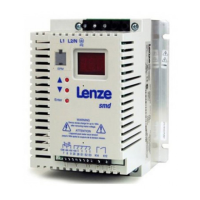What does earth fault mean on Lenze Inverter?
- ZZachary CampbellAug 31, 2025
If the Lenze Inverter indicates an earth fault, it could be due to: * A grounded motor phase: Inspect the motor and motor cable. * Excessive capacitive charging current of the motor cable: Use shorter motor cables with a lower charging current.


